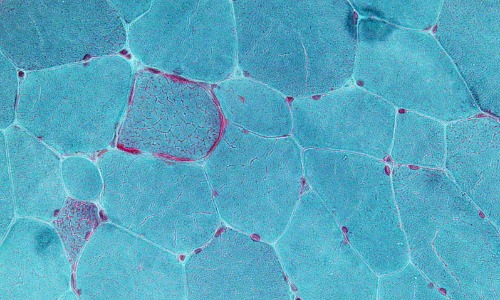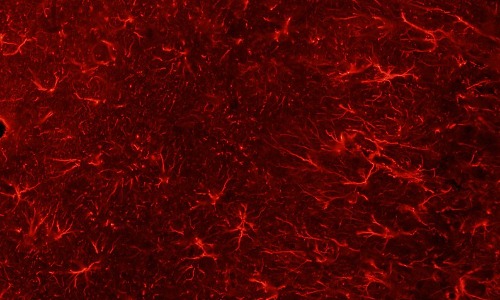Loading
Journal of Cellular Signaling
ISSN: 2692-0638
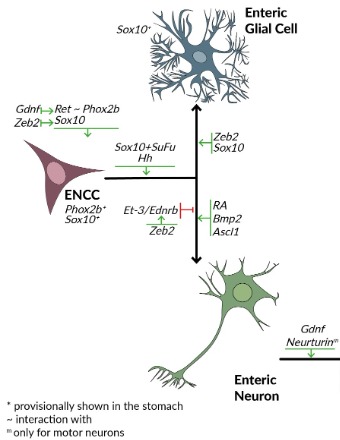
2022
Volume 3, Issue 1, p1-78
Articles published in this issue are Open Access and licensed under Creative Commons Attribution License (CC BY NC) where the readers can reuse, download, distribute the article in whole or part by mentioning proper credits to the authors.
The Outcome of Tumor Ablation Therapies is Determined by Stress Signaling Networks
Mladen Korbelik
Increasingly prominent roles in interventional oncology are held by various tumor ablation therapies performed by direct applications of local acute trauma-inducing insult to the targeted lesion aiming for its rapid in situ destruction. These therapies include treatments based on various forms of thermal energy delivery (photothermal, cryoablation, microwave ablation, radiofrequency ablation), non-thermal illumination (photodynamic therapy), electric field exposure, or high hydrostatic pressure
J Cell Signal, 2022, Volume 3, Issue 1, p1-4 | DOI: 10.33696/Signaling.3.062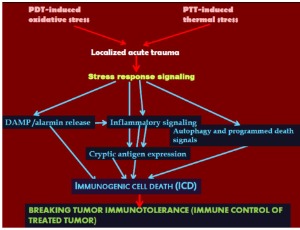
TRPM8 Channels and SOCE: Modulatory Crosstalk between Na+ and Ca2+ Signaling
Guilherme Henrique Souza Bomfim
The electrochemical driving forces across the plasma membrane both in excitable and non-excitable mammalian cells are finely regulated by different ion channels, pumps, and exchangers that are essential for a wide range of biological processes. The modulation between sodium (Na+), calcium (Ca2+), and intracellular downstream pathways is tightly linked through several mechanisms that generate spatiotemporal ion waves.
J Cell Signal, 2022, Volume 3, Issue 1, p5-13 | DOI: 10.33696/Signaling.3.063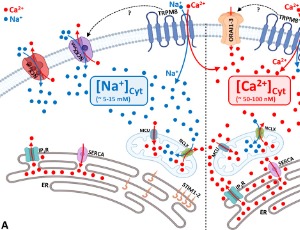
Differentiation and Subtype Specification of Enteric Neurons: Current Knowledge of Transcription Factors, Signaling Molecules and Signaling Pathways Involved
Nastasia Popowycz, Leen Uyttebroek, Guy Hubens, Luc van Nassauw
The enteric nervous system is the largest component of the autonomic nervous system. It contains a broad network of interconnected plexuses and enteric neuronal subtypes which are in charge of the normal functioning of the gastrointestinal tract. Vagal and sacral neural crest cells are at the basis of the enteric nervous system development. These cells undergo multiple processes such as migration, proliferation and differentiation to finally form a functional enteric nervous system.
J Cell Signal, 2022, Volume 3, Issue 1, p14-27 | DOI: 10.33696/Signaling.3.064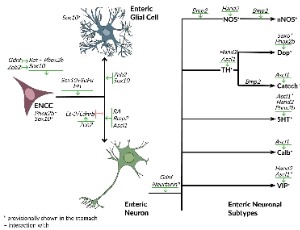
Interferon Gamma, MHC Class I Regulation and Immunotherapy
Maria Gómez-Herranz, Magdalena Pilch, Ted Hupp, Sachin Kote
The activation of endogenous IFNγ signaling pathway or the administration of recombinant IFNγ increases the expression of MHC-I. MHC-I molecules are core elements for antigen recognition in tumor cells. A better understanding of the regulation of their expression would contribute to counteracting tumor immune escape and enduring permanent tumor rejection. Efficient and functional expression of HLAs dramatically impacts the number of tumor-associated antigens presented to CTL for cell recognition.
J Cell Signal, 2022, Volume 3, Issue 1, p28-39 | DOI: 10.33696/Signaling.3.065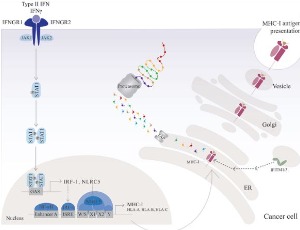
AID and APOBEC3 Involvements in Non-Conventional IgD Class Switch Recombination in Mice
Melissa Ferrad, Nour Ghazzaui, Hussein Issaoui, Jeanne Cook-Moreau, Yves Denizot
In mature B-cells, class switch recombination (CSR) substitutes the constant (C) μ gene with other C genes (such as γ, ε and α) thereby generating IgG, IgE and IgA antibodies with new effector functions but same the antigenic specificity compared to IgM. CSR is a complex process with I-promoter transcription, targeting of the DNA-editing enzyme activation-induced deaminase (AID) to specific DNA switch (S) regions preceding C regions (except Cδ), generation of double strand breaks and recruitment of DNA repair factors for the end-joining process.
J Cell Signal, 2022, Volume 3, Issue 1, p40-43 | DOI: 10.33696/Signaling.3.066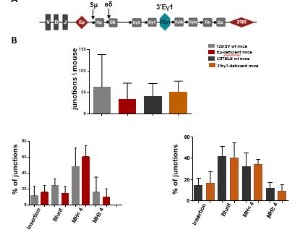
Expression and Localization of Phosphoinositide-Specific Phospholipases C in Cultured, Differentiating and Stimulated Human Osteoblasts
Sara Daisy Casoni, Alessia Romanelli, Marta Checchi, Serena Truocchio, Marzia Ferretti, Carla Palumbo, Vincenza Rita Lo Vasco
The osteoblasts contribute to bone homeostasis maintaining the bone mass, and intervene in bone injuries repair. Insights in the events leading to the proliferation and differentiation of osteoblasts might allow uncover potential molecular targets to control the complex mechanisms underlying bone remodeling. Signal transduction pathways contribute to the differentiation and metabolic activities of osteoblasts, with special regard to calcium-related signaling, including the Phosphoinositide (PI) pathway.
J Cell Signal, 2022, Volume 3, Issue 1, p44-61 | DOI: 10.33696/Signaling.3.067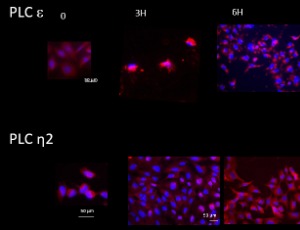
c-JUN n-Terminal Kinase (JNK) Signaling in Autosomal Dominant Polycystic Kidney Disease
Abigail O. Smith, Julie A. Jonassen, Kenley M. Preval, Roger J. Davis, Gregory J. Pazour
Polycystic kidney disease is an inherited degenerative disease in which the uriniferous tubules are replaced by expanding fluid-filled cysts that ultimately destroy organ function. Autosomal dominant polycystic kidney disease (ADPKD) is the most common form, afflicting approximately 1 in 1,000 people and is caused by mutations in the transmembrane proteins polycystin-1 (Pkd1) and polycystin-2 (Pkd2).
J Cell Signal, 2022, Volume 3, Issue 1, p62-78 | DOI: 10.33696/Signaling.3.068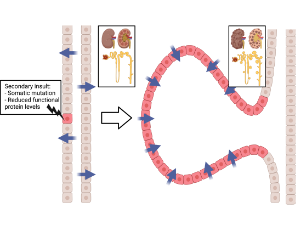
Recommended Articles
Chimeric Antigen Receptor CAR NK Cells Emerging Immunotherapy for the Treatment of Cancer
Although NK cells are recognized as effector lymphocytes of the innate immune system, they also regulate the adaptive immune response by releasing inflammatory cytokines and developing immunological memory. Unlike other lymphocytes such as T or B cells, NK cells do not express rearrangeable, antigen-specific receptors.
Cyclic Nucleotide Signaling Pathways in Apicomplexan Parasites Provide a Valuable Source for Novel Drug Targets
Malaria is one of the most important disabling human, tropical disease caused by different Plasmodium species, which are protozoan parasites belonging to the Apicomplexa. The Apicomplexan parasites have a plastid like structure the “apicoplast” and comprise the genera Plasmodium, Toxoplasma and Cryptosporidium causing malaria, toxoplasmosis, and cryptosporidiosis.
Novel Hippocampal Interaction between Spexin and Corticotropin Releasing Factor
Nowadays, people pay more and more attention to homeostatic regulation, which is the detrimental effect of stress on physiological and psychological well-being and cannot be ignored. The public perception of anxiety has been associated with the hypothalamic hormones, because of the pivotal role of the hypothalamic-pituitaryadrenal axis to promote the pituitary-adrenal functions and endocrine responses.
DILI, HILI, RUCAM Algorithm, and AI, the Artificial Intelligence: Provocative issues, Progress, and Proposals
Artificial Intelligence (AI) techniques represent a fascinating, provocative, and challenging discipline, are pervasive and of global importance. The European Commission summarized the current state in a White Paper on AI issues released on 19 February 2020, discussing various AI concepts that revolutionized many complex processes
Impact of Cisplatin Dosing Regimens on Mammary Tumor Growth in an Animal Model
In a recent paper, we introduced a variant of the classical Simeoni tumor growth model, and illustrated its value in assessing tumor growth in a reproducible mouse model for mammary tumors. Our modification consisted of incorporating delay differential equations in the mathematical formulation of the Simeoni model, to represent the delay in drug action often observed under chemotherapeutic or immunotherapeutic regimens.
Deubiquitinase as Potential Targets for Cancer Immunotherapy
During the last few decades, immunotherapy is considered to be an important approach to help our immune system to fight various kinds of diseases, such as tumor. Sometimes, it works very well for some types of cancers, for example: bladder cancer, colorectal cancer, breast cancer and lymphoma.
The Effect of Glucocorticoids on Angiogenesis in the Treatment of Solid Tumors
Glucocorticoids (GCs) are defined by their role in maintaining glucose homeostasis and natural GCs are a class of corticosteroids secreted by the adrenal cortex. Cortisol is the most important natural GC in humans. Cellular cortisol levels are regulated by the tissue-specific metabolic enzymes 11β-hydroxysteroid dehydrogenase 1 and 2 (11β-HSD 1 and 2); 11β-HSD 1 converts inactive cortisone to active cortisol, while 11β-HSD 2 has the opposite function.
Acute Success and Long-term Follow-up of Catheter Ablation of Isthmus-dependent Atrial Flutter; A Comparison of 10 mm Tip Standard, 6 mm Tip Irrigated Radiofrequency, and Cryotherapy Catheters
Various catheter ablation technologies have evolved to improve the procedural success and safety of cavotricuspid isthmus (CTI) block. Numerous studies have compared the different energy types, catheter tip sizes, and energy settings.
Role of the Gut Microbiome in the Modulation of Cancer Immunotherapy Response
The gut microbiome or gut flora is a vast community of microorganisms such as bacteria, viruses, protozoa, and fungi that inhabit the digestive tract of the human and other animals [1,2]. In the human body, bacterial species colonize into the oral cavity, skin, vagina, and placenta, however, the largest population of microorganisms resides in the intestine.
Can Filtration Technology Advance Culture of Circulating Tumor Cells towards Precision Medicine?
Today, cancer is the second leading cause of death, with about 9.6 million deaths globally in 2018 [1]. At the end of the 19th century, Paul Ehrlich contributed a milestone to cancer research by introducing chemotherapy as a promising tumor treatment approach. Since then, cancer treatment has undergone tremendous advances, with chemotherapy still being a widely used cancer treatment method today, however, often associated with severe side effects.
Influence of Clinical Risk Factors on Outcomes in Men with Stage I Non-Seminomatous Germ Cell Tumor Undergoing Robot-Assisted Retroperitoneal Lymph Node Dissection
Retroperitoneal lymph nodes are often the first landing site of metastatic disease in men with testicular cancer. Primary retroperitoneal lymph node dissection (RPLND) for clinical stage I NSGCT can accurately surgically stage patients who may have nodal micrometastases, and in some cases, can serve as the primary therapy when volume of metastasis is low.
Double Trigger, Reverse Triggering, and Pseudo-Reverse-Triggering
The double trigger (DT) is the second asynchrony in frequency, after the failed cycles [1]. Compared to the latter, it can be more injurious since it usually increases tidal volume (Vt), transmural and transvascular pressure to levels that can cause ventilator-induced lung damage [2,3]; and self-inflicted by the patient (P_SILI) [4], as well diaphragmatic injury.
Avulsion of the Common Extensor Tendon and Radial Collateral Ligament Tear
A 59-year-old left hand dominant female was evaluated by a physical therapist. The patient had an 8-year history of chronic intermittent left elbow pain with a recent exacerbation occurring after moving furniture. Aggravating factors included holding a coffee cup, picking up trash bags, and lifting heavy dishes. Symptoms were eased by ice and Meloxicam as prescribed by her primary care provider.
Primary Temporal Bone Meningioma Presenting as Chronic Mastoiditis and Sigmoid Sinus Thrombosis: Report of a Case with Literature Analysis
Meningiomas are common, primary brain tumors, accounting for up to 30% of intracranial neoplasms; they are usually slow-growing and benign [1]. Primary extra cranial meningiomas are rare, and approximately 2% of meningiomas are located extra cranially [2]. Furthermore, primary extra cranial meningiomas of the ear and temporal bone are exceedingly rare .
Salivary Protein Antigens for Breast Cancer Biomarkers
Breast Cancer is the most regularly diagnosed type of cancer in women in the world, making up on its own 25% of all cases, or nearly 2 million new cases in 2018, and 15% of all cancer related deaths, or around 626,700 deaths for that same year.
Commentary on “Epigenetically Altered T Cells Contribute to Lupus Flares”
The recently published manuscript entitled “Epigenetically Altered T Cells Contribute to Lupus Flares” summarizes recent advances in our understanding of how the environment alters the immune system to cause flares of systemic lupus erythematosus (SLE) in genetically predisposed people, and why it affects women approximately 9 times more often than men
Dendorbium Nobile Lindl. Alkaloids Suppress NF-κB and NLRP3 Signaling Pathways to Attenuate Lipopolysaccharide-induced Neuroinflammation
The important immune cells in the brain are called microglia acting as the central junction between neuroinflammation and neurodegenerative diseases. In patients of cognitive disorders and Alzheimer’s disease (AD) animal models, amoebic morphology and inflammatory pathways are activated to release numerous cells in the inflammatory factors by active microglia.
Ligand-free Few Atoms Ag Nanoclusters Synthesis and Their Potential Application as Photocatalytic Agents
Reducing the size of a metal from macroscopic to the nanoscale generates a scaling behavior in physical and chemical properties due to the large surface-to-volume fraction. While a further size reduction to small clusters under 2 nm (<~100 atoms) yield geometric and electronic structurwhich are still different from their nanoparticle (NP) counterpart.
Leucocyte-Tumor Cell Hybridization Can Initiate Cancer Metastasis
According to estimates from the International Agency for Research on Cancer, by the year 2030 there will be 22 million new cancer cases and 13 million deaths per year. The main reason for death from cancer is not the initial tumor but it’s metastasis to distant parts of the body, yet this process has remained poorly understood for quite some time.
CTLA-4 and PD-L1 or PD-1 Pathways: Immune Checkpoint Inhibitors and Cancer Immunotherapy
The immune system developed certain checks and balance to control or inhibit the reactivity against normal cells of the body. Uncontrolled immune responses to the non-self entities such as bacteria, viruses, parasites, or mutated self-antigens can cause an inflammatory reaction and autoimmune diseases.
Trending Special Issues
About Scientific Archives
Scientific Archives is a global publisher initiated with the mission of ensuring equal opportunity for accessing science to research community all over the world. Spreading research findings with great relevance to all channels without any barrier is our goal. We want to overcome the challenges of Open Access with ensured quality and transparency.

